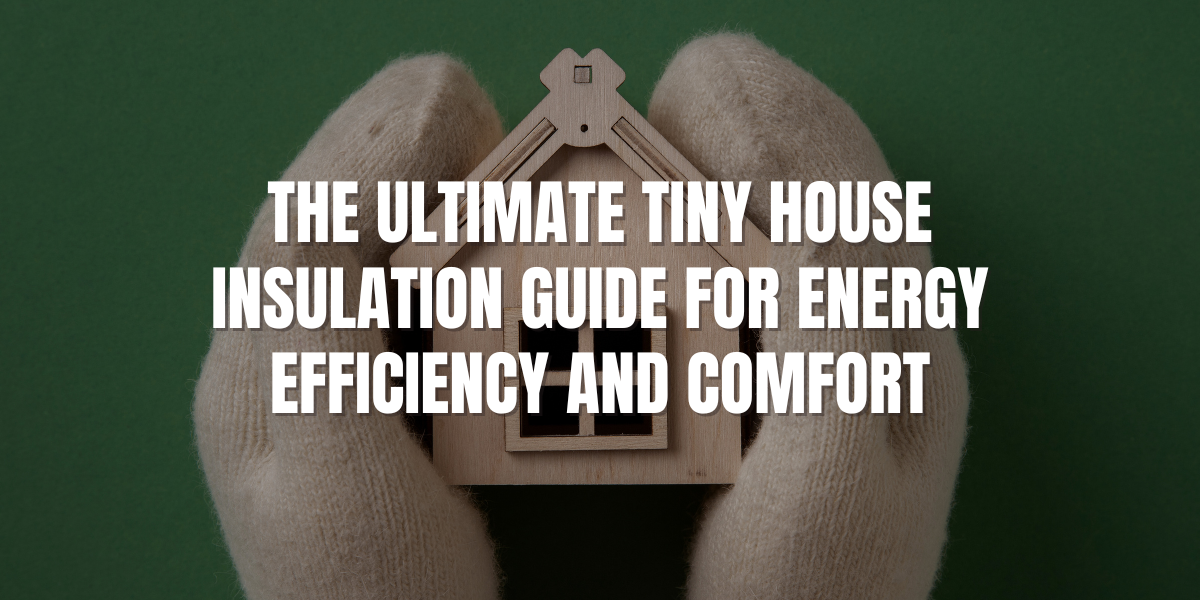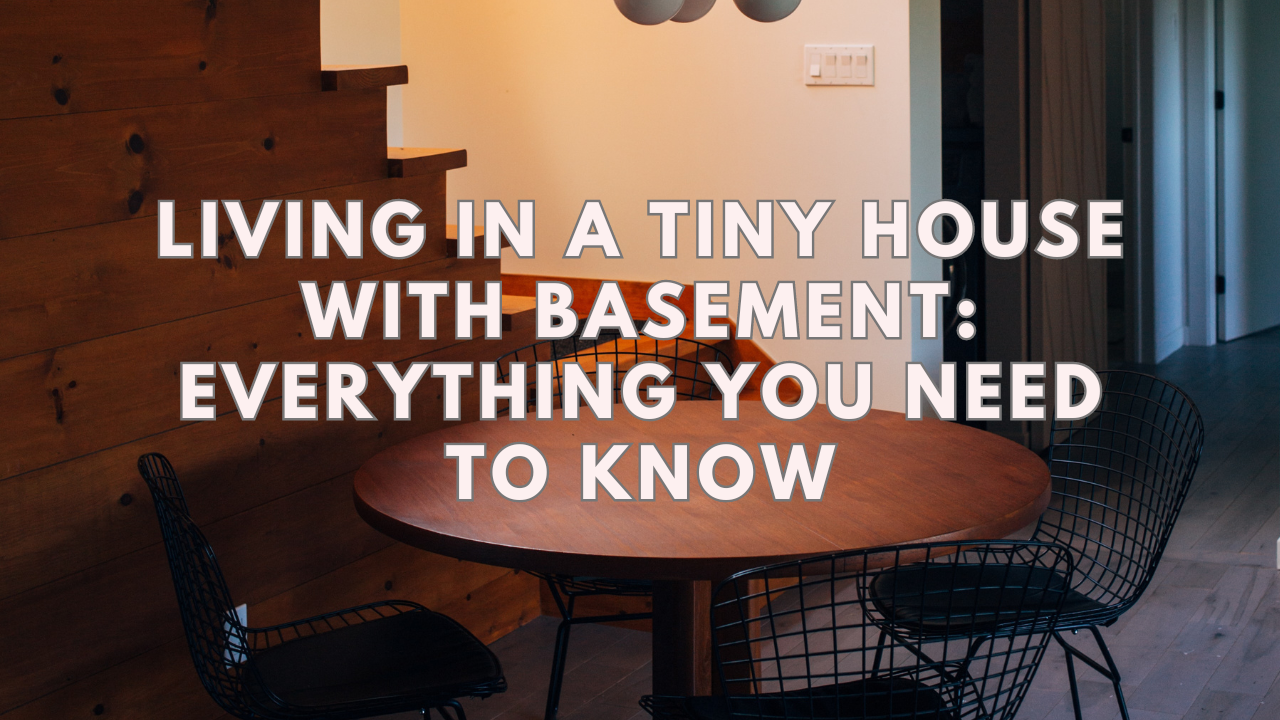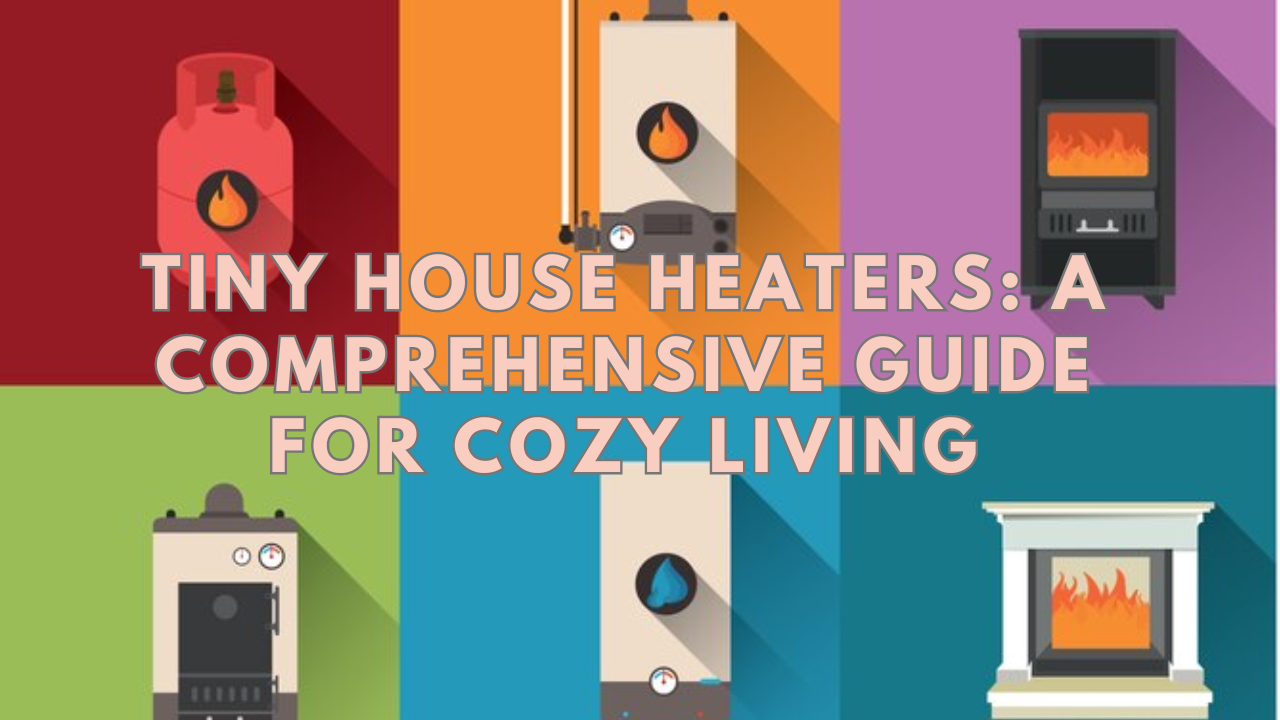Insulation is the crucial element of constructing a cozy and energy-efficient tiny home. It can lessen noise and moisture issues while also assisting you in keeping your tiny home warm in the winter and cool in the summer.
However, how can you decide which insulation is ideal for your tiny house? What are the various insulation types, and how do they differ from one to another? What are the finest procedures and advice for insulating the roof, walls, and floor? In this article, we will try to address some of these queries.
What Insulation’s R-Value Means
Its R-value gauges an insulation’s resistance to heat transfer. The fact that insulation does not keep the heat from your heater or the cold from your air conditioning in might be confusing for novice tiny house builders.
R-value only serves to quantify the way something insulates against heat transfer. You may hear people refer to it as R-30 or R-7. The better the job is done, the higher the number. The extent to which something insulates per inch of thickness is essential to consider, though. It enables apples-to-apples comparisons of insulations. Unless you frame with 2’6″ lumber, which has 5.5 inches of area to insulate, remember that most constructed houses have a 3.5-inch gap for insulation.
Another crucial point to consider is that heat rises, which is why your attics are insulated, frequently between two and three times as much as the walls and floors. It happens when the walls have an R-13 rating while the ceiling has an R-30 rating.
Insulation Techniques For Tiny Homes
Select your insulation, place it between your studs, and then continue. The issue with that strategy is that if you get them incorrect, your home will be stuffy, hot, cold, and moldy.
Insulation has benefits beyond just keeping you warm. Likewise, it aids in controlling the movement of air through your wall systems and moisture in several crucial ways. Insulating is not hard to do, though it does take some knowledge of the fundamentals.
Airtighten Your Tiny House
For your home’s comfort and the efficiency of your insulation, air sealing will work wonders. A leaky home with good insulation can do worse than a home with mediocre insulation and poor sealing.
The best course of action is to run a blower door check after doing your utmost to seal your home. It lowers the interior pressure and makes it possible to detect where air is being drawn in. To locate air leaks, use a thermal camera or a smoke pen.
Thermal Bridges
Thermal bridging refers to the crossing of a heat-transmitting material inside or outside your climate-controlled room.
Wheel well fenders are a helpful example of a small housing when constructing a trailer. You won’t be able to insulate around the wheel wells and the majority of your walls if you partially construct your walls over them. Your tiny home’s heat is transferred to the metal of the trailer, which creates a conduit for it to more easily escape into the atmosphere.
The homes are built with an outside barrier of insulation or an item called Zip-R, which is roofing with a layer of insulation built in, as the studs in our walls also serve as a thermal bridge.
Check Your Codes
A crucial next step is finding what the code demands for the ground, ceiling, and walls. It will vary depending on the city or municipality because it determines the climate where you live. Usually needs an R factor of 15 in the walls and 30 in the ceiling for temperate climates. Higher R values are needed in colder areas.
Pick the Right Insulation
Some solutions are better than others, but many do not pick them because of price or the requirement to employ a professional installer, which is virtually the same as cost. It all depends on the amount of money you have to spend on insulation.
The fact that insulation compensates for itself over time is crucial to understand. Although this is a commonly accepted reality, people who try to stretch their budgets will look for ways to save money and will consequently skimp on insulation.
The cost of insulation between average insulation and the best insulation is roughly $2000, but keep in mind that you will pay 30% less in electricity bills each month for every day of your life. It implies that you should start saving money after roughly 3.5 years.
Follow the Manufacturer’s Installation Instructions
Many manufacturers have discovered that their customers are happier the better they are at educating people about proper installation.
Many insulation manufacturers are eager to answer your concerns and frequently have a wealth of helpful information about installation that is available without charge.
Insulating Various Spaces in Your Tiny House
Although insulating your walls is a smart strategy, it might not be sufficient to achieve your small house‘s maximum energy efficiency. Therefore, you must insulate the various components of it.
Roof Insulation for Tiny Homes
Your roof’s insulation is essential since heat rises, making it a significant area for heat loss. Because of this, codes generally allow for substantially more insulation, usually at an R-30 level. A tiny house’s height is relevant because we are limited in how high we can construct them.
Insulation for Tiny House Walls
Ensure the insulation does not slide to the button of the wall cavity while insulating the walls of your tiny house. Since insulation must entirely cover the space for it to be effective, this could be bad. It is preferable to listen to professional guidance because they frequently add fibers or chemicals to maintain the loft of the insulation. Moreover, if you are doing this yourself, the makers offer related instructions and recommendations, so carefully adhere to the insulation.
Floor Insulation for Tiny House
The tiny house-on-wheels trailer will let chilly air pass underneath it. You can understand why it is a place that needs a lot of focus when it comes to insulation when you consider a great deal of thermal bridging occurring in a little house through the floor.
Skirting Insulated for Your Tiny House
Be sure to include insulated skirting as well; insulated skirting can assist in keeping floors from getting too cold. Skirting creates a warm zone under your house and prevents the wind from moving and transferring heat away. However, ensure this space is well-vented to prevent mold, animals, and bugs from settling there.
Eco-Friendly Insulation Options for Your Tiny Home
Tiny home insulation comes in a diversity of forms and is constructed from a variety of materials.
Spray Foam Insulation
You can use this special chemical spray to give the interior of your house’s walls a light coating. When sprayed, this thin coating starts to expand and solidify, creating a thick layer of insulation in your home’s walls. Furthermore, spray foam insulates the house from outside noise and has a high R-value.
Spray Foam: Open Cell Insulation
Gas bubbles interact with one another in this open-cell structure just like they would on a sponge.
Benefits: More environmentally friendly choices are available, and they are excellent sound insulators that do not shrink and fill all gaps.
Spray Foam: Closed Cell Insulation
This insulating material is produced using a dense cell structure and is significantly heavier than open-cell insulation.
Benefits: It increases structural rigidity and decreases air leakage; self-installation is an option.
Fiberglass Insulation
This sort of insulation, fiberglass, is created by heating a mixture of sand and glass to extremely high temperatures. The resulting combination is then processed into tiny, coarse fibers that resemble cotton balls for insulated panels. It is one of the insulation types frequently found in modern, typical homes.
Benefits: Simple to obtain, lightweight, reasonably priced, and simple to install; incorporates some recycled components.
Rock Wool Insulation
By melting natural basalt rocks to exceptionally high temperatures, this substance is produced. The substance melts to form threads that can serve as insulation for your tiny home.
Benefits: It does not burn easily, repels rats, and is environmentally friendly.
Rigid Foam Insulation: Extruded Polystyrene
XPS rigid foam board insulation has a plastic-like appearance and typically comes in pink or blue. Both high-density and low-density choices are available for the solid board insulation material.
Benefits: It includes being lightweight, moisture resistant, incredibly sturdy, and having excellent insulating performance.
Rigid Foam Insulation: Expanded Polystyrene
This insulation, commonly referred to as beadboard, comes in low- and high-density varieties.
Benefits: It is less expensive than other rigid foam choices, lightweight, and less environmentally hazardous than XPS.
Rigid Foam Insulation: Polyisocyanurate Foam
Closed-cell foam with a very high density is called polio. Although it offers excellent moisture resistance for further protection, it has several drawbacks.
Benefits: It is the greenest rigid foam choice; it is lightweight, resistant to moisture, and resistant to air filtration.
Blue Jeans or Cotton Insulation
Recycling cotton and blue jeans can be utilized as an eco-friendly substitute for traditional insulation materials. It is also called cotton insulation or denim insulation.
Benefits: Recycles discarded materials, is less combustible than other insulation solutions, is excellent for insulating against sound, and is appropriate for do-it-yourselfers.
FAQs
How Frequently Should Insulation Be Changed?
Insulation should typically be upgraded or replaced every 15 to 20 years. However, based on the type of insulator placed, the original insulation’s R-value, compression and displacement over time, and the presence or absence of damage, it can need rebuilding or retrofitting sooner.
What Type of Insulation Is the Most Affordable?
Because of its affordable, effective insulating capabilities, expanded polystyrene (EPS) is a leading material for safeguarding houses, foods, and delicate items. In reality, EPS has the highest R-value per dollar within the group.
Does Floor Insulation Matter?
Floor insulation can provide a lot of advantages. If floors are not insulated to a decent degree, 10–20% of heat loss from a structure may occur through them.
What Is the Difference in Temperature for Insulation?
You need a temperature difference of at least 20 degrees for the greatest effects. If your home is hot outside, turn on the heat or use the air conditioning. Any areas where you see temperature variations are potential sites for a lack of insulation.
The Wrapping-Up
We hope you enjoyed reading this piece and learned something new about insulation for tiny homes. Insulation is not just an issue of convenience and effectiveness but also of imagination and character. Depending on your financial situation, preferences, and impact on the environment, you can select from several insulation materials and techniques.
Furthermore, you can alter the insulation to fit the design and aesthetic of your tiny house. Using spray foam, wool, fiberglass, or reclaimed denim, you can add coziness and individuality to your tiny home. Do not forget that insulation is a way of life, not merely a layer of material. I appreciate your reading.





